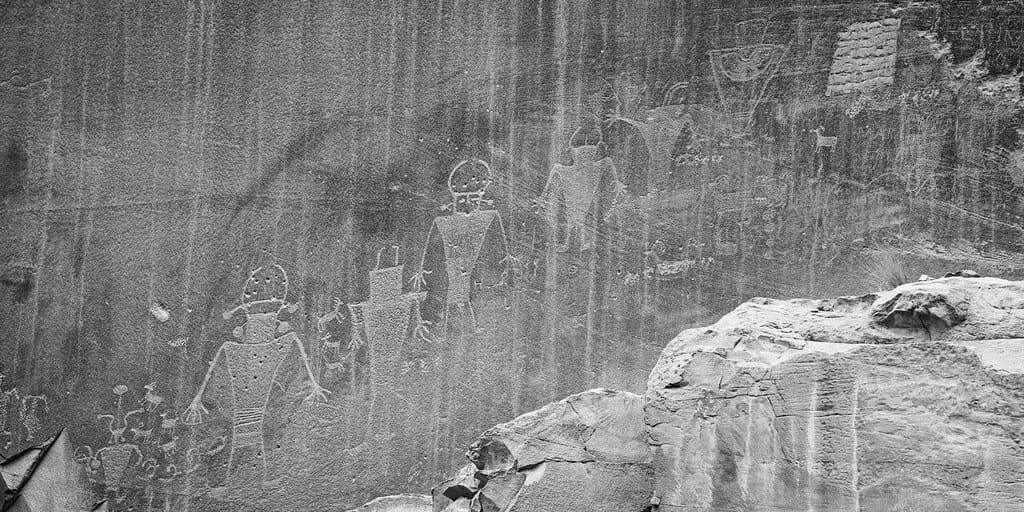Ancient Footprints Rewrite History: White Sands Discovery Confirms Humans in Americas 23,000 Years Ago
For decades, archaeologists believed humans first arrived in the Americas around 13,000 years ago. Now, revolutionary dating of fossilized footprints at White Sands National Park has shattered this timeline, confirming that our ancestors walked these lands at least 23,000 years ago—during the height of the last Ice Age.
The Discovery That Changes Everything
In 2021, researchers at White Sands National Park in New Mexico made headlines with claims that human footprints preserved in ancient lake beds dated back 21,000 to 23,000 years. The scientific community met these findings with skepticism, as they contradicted the long-held "Clovis First" theory that placed the earliest Americans at around 13,000 years ago.
Now, new dating techniques have silenced the doubters. Using advanced radiocarbon dating on conifer pollen and quartz grain analysis, two independent research teams have confirmed the original dates, cementing this as one of the most significant archaeological discoveries in the Americas.
Why This Matters: Rewriting Human Migration
The implications are staggering. If humans were in New Mexico 23,000 years ago, they must have arrived even earlier to migrate that far south. This timing places their arrival during the Last Glacial Maximum—when massive ice sheets supposedly blocked migration routes from Asia.
Dr. Jeff Pigati from the U.S. Geological Survey, who led the latest dating effort, explains: "These footprints provide unequivocal evidence that people were in North America during the Last Glacial Maximum, when ice sheets covered much of the continent and would have made migration from Asia extremely difficult."
The Science Behind the Dating
The original 2021 study dated seeds from aquatic plants found in the footprint layers. Critics argued these plants could absorb old carbon from groundwater, potentially skewing results. The new research addressed these concerns head-on:
- Radiocarbon dating of terrestrial pollen: Scientists isolated pollen from pine trees and other land plants that wouldn't be affected by aquatic carbon issues
- Optically stimulated luminescence: This technique measured when quartz grains were last exposed to sunlight, providing an independent age estimate
- Multiple sampling sites: Researchers tested materials from above, below, and within the footprint layers
All methods converged on the same age range: 21,000 to 23,000 years old.
A Window into Ice Age Life
The White Sands footprints offer an unprecedented glimpse into daily life during the Ice Age. The tracks include:
- Adults and children walking together
- Evidence of people carrying heavy loads (deeper impressions on one side)
- Interactions with Ice Age megafauna, including mammoths and giant ground sloths
- Play behavior, with children jumping in puddles and running in circles
This isn't just about dates—it's about understanding how these early Americans lived, traveled, and thrived in a dramatically different landscape.
Challenging Archaeological Orthodoxy
The confirmation of these dates forces archaeologists to reconsider fundamental questions:
How did they get here? With ice sheets blocking the traditional Bering land bridge route, researchers must explore alternatives like coastal migration along the Pacific.
Where else should we look? If humans were at White Sands 23,000 years ago, older sites likely exist elsewhere in the Americas.
What does this mean for Native American history? These findings extend the Indigenous presence in the Americas by nearly 10,000 years, deepening the connection between Native peoples and their ancestral lands.
The Road Ahead
This discovery opens new chapters in American archaeology. Research teams are now re-examining other controversial early sites with fresh eyes and new dating techniques. The White Sands footprints have proven that the story of human arrival in the Americas is far older and more complex than previously imagined.
As more evidence emerges, one thing becomes clear: the first Americans were remarkable pioneers who conquered a continent during one of Earth's most challenging climatic periods. Their footprints at White Sands stand as testament to human resilience, adaptability, and the enduring mystery of our species' incredible journey across the globe.
